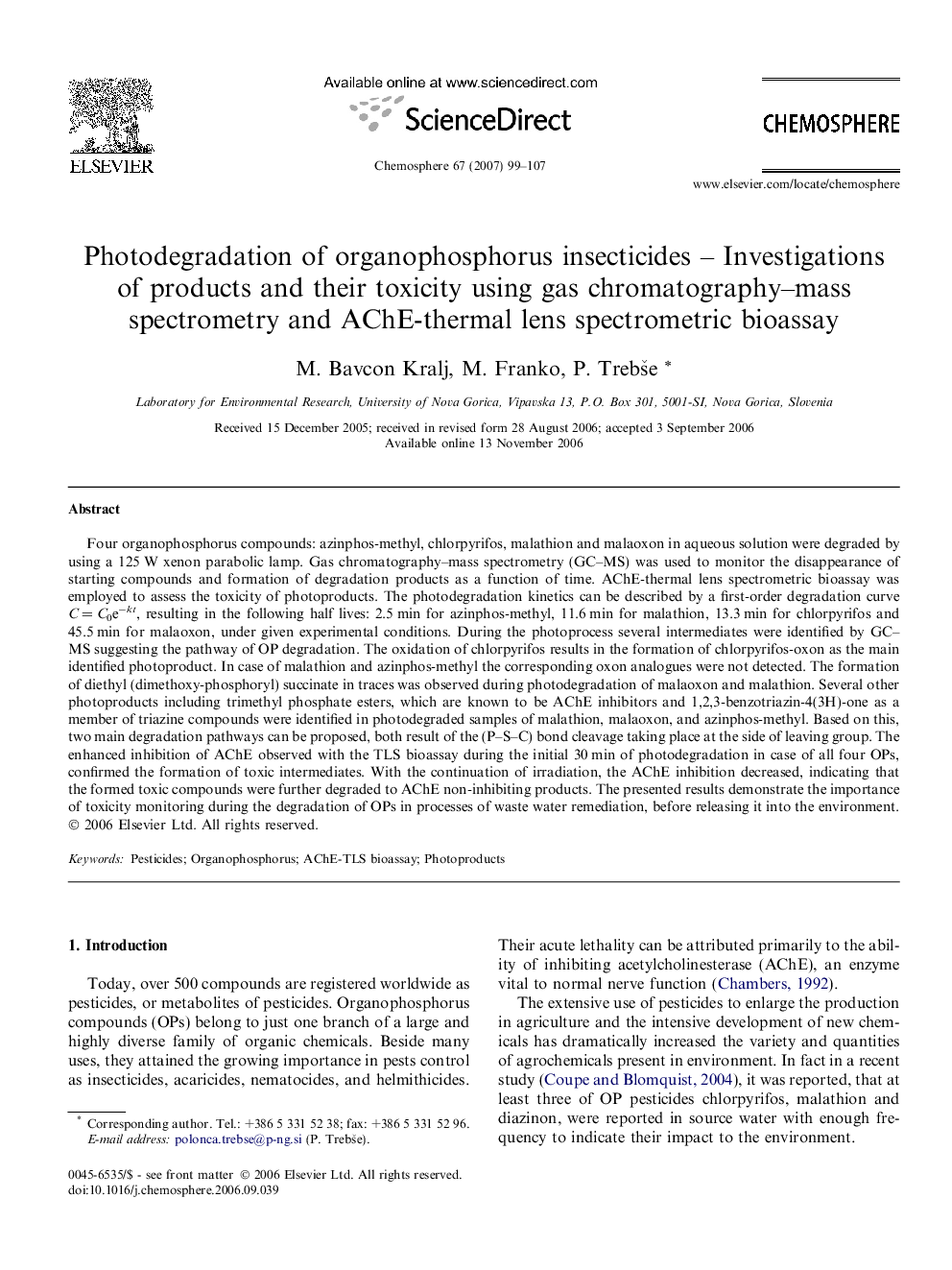| کد مقاله | کد نشریه | سال انتشار | مقاله انگلیسی | نسخه تمام متن |
|---|---|---|---|---|
| 4415823 | 1307760 | 2007 | 9 صفحه PDF | دانلود رایگان |

Four organophosphorus compounds: azinphos-methyl, chlorpyrifos, malathion and malaoxon in aqueous solution were degraded by using a 125 W xenon parabolic lamp. Gas chromatography–mass spectrometry (GC–MS) was used to monitor the disappearance of starting compounds and formation of degradation products as a function of time. AChE-thermal lens spectrometric bioassay was employed to assess the toxicity of photoproducts. The photodegradation kinetics can be described by a first-order degradation curve C = C0e−kt, resulting in the following half lives: 2.5 min for azinphos-methyl, 11.6 min for malathion, 13.3 min for chlorpyrifos and 45.5 min for malaoxon, under given experimental conditions. During the photoprocess several intermediates were identified by GC–MS suggesting the pathway of OP degradation. The oxidation of chlorpyrifos results in the formation of chlorpyrifos-oxon as the main identified photoproduct. In case of malathion and azinphos-methyl the corresponding oxon analogues were not detected. The formation of diethyl (dimethoxy-phosphoryl) succinate in traces was observed during photodegradation of malaoxon and malathion. Several other photoproducts including trimethyl phosphate esters, which are known to be AChE inhibitors and 1,2,3-benzotriazin-4(3H)-one as a member of triazine compounds were identified in photodegraded samples of malathion, malaoxon, and azinphos-methyl. Based on this, two main degradation pathways can be proposed, both result of the (P–S–C) bond cleavage taking place at the side of leaving group. The enhanced inhibition of AChE observed with the TLS bioassay during the initial 30 min of photodegradation in case of all four OPs, confirmed the formation of toxic intermediates. With the continuation of irradiation, the AChE inhibition decreased, indicating that the formed toxic compounds were further degraded to AChE non-inhibiting products. The presented results demonstrate the importance of toxicity monitoring during the degradation of OPs in processes of waste water remediation, before releasing it into the environment.
Journal: Chemosphere - Volume 67, Issue 1, February 2007, Pages 99–107